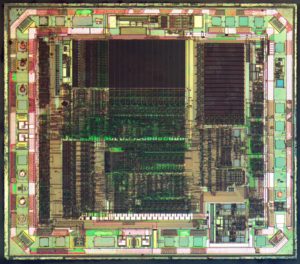Clone DSP Processor TMS320F2808 Memory Firmware
The TMS320F2808 provides a register file containing eight auxiliary registers (AR0 – AR7). The auxiliary registers are used for indirect addressing of the data memory or for Clone DSP Processor TMS320F2808 Memory Firmware. Indirect auxiliary-register addressing allows placement of the data memory address of an instruction operand into one of the auxiliary registers.
These registers are referenced with a 3-bit auxiliary register pointer (ARP) that is loaded with a value from 0 through 7, designating AR0 through AR7, respectively. The auxiliary registers and the ARP can be loaded from data memory, the ACC, the product register, or by an immediate operand defined in the instruction in order to Philip Chip P89V51RC2 Dump Reading. The contents of these registers also can be stored in data memory or used as inputs to the CALU.
The auxiliary register file (AR0 – AR7) is connected to the ARAU. The ARAU can autoindex the current auxiliary register while the data memory location is being addressed. Indexing either by ±1 or by the contents of the AR0 register can be performed after Samsung S3F94C8 MCU Unlocking. As a result, accessing tables of information does not require the CALU for address manipulation; therefore, the CALU is free for other operations in parallel.
The TMS320x240 devices are configured with the following memory modules:
Dual-access random-access memory (DARAM)
Flash EEPROM (’F240)
Mask ROM (’C240)
There are 544 words ´ 16 bits of DARAM on the ’x240 device. The ’x240 DARAM allows writes to and reads from the RAM in the same cycle. The DARAM is configured in three blocks: block 0 (B0), block 1 (B1), and block 2 (B2). Block 1 contains 256 words and block 2 contains 32 words, and both blocks are located only in data memory space when Clone DSP Processor TMS320F2808 Memory Firmware. Block 0 contains 256 words, and can be configured to reside in either data or program memory space by IC Breaking.


